Conferencing and meeting spaces are important parts of any office space. These areas can be anywhere in the office, however the shape and size of the room will determine the amount and type of furniture you can place in it. There are multiple configuration possibilities that allow for larger or smaller groups, but with so many options how do you determine which are best for your space?
The first thing you should determine is the type of conferencing you will be using the space for. Do you want a space where there will be a central speaker to whom the audience should focus their attention? Or do you need a more collaborative style of seating? There are several types of arrangements that I will discuss in this article, as well as a typical rule for how many chairs you can fit around each type of table.
The traditional Rectangular Conference Style table is probably the type in which you are most familiar. This table has guests seated on all four sides, with those most important to the meeting sitting on either end cap. This style allows for all participants to be seen and voice their opinions to the group. It is ideal for both large and small conferencing needs because multiple tables can be pushed together for more seating.
Another popular style is the U-Shaped table. This consists of multiple rectangular tables pushed together to make a “U”. With this configuration, guests normally sit on the outside of the “U” but they can also sit on the inside if more space is needed. This is best for presentation spaces because projectors and television screens can be placed in the opening of the “U”, allowing all participants to see the screen.
Theater Style seating is becoming increasingly popular for large conferencing requirements. This style consists of multiple rows of tables which can be arranged in straight rows, semi-circles, or a herringbone shape. This design allows for the maximum amount of participants and is best suited for presentations or lectures.
Banquet Style seating is great for those who need a smaller, more intimate meeting space. Participants sit around a circular or elliptical table allowing all members to face one another.
The last style I’ll mention is the Hollow Rectangle. Similar to the U-shaped configuration, this style consists of multiple square or rectangular tables pushed together in an outline of a rectangle. This leaves the center of the space open and available for the speaker or presenter to address the participants. This style can be used for smaller groups, but is typically used for larger settings such as board meetings.
Now that we have discussed a few basic designs for conference and meeting spaces, I will give you a general rule of how to determine the number of chairs a typical table can fit. An average chair is about 23” wide and as a rule of thumb you should leave 4” on either side of the chair. So, expect to leave 31” for each chair. *Rule= table size or circumference/ width of chair + 8” (with Round or Oval tables you can generally add an extra chair to this rule) See Chart Below.
Questions contact us at 978-251-2226 or at design@joycecontract.com, Or for more examples of conference or meeting room tables visit the Joyce Contract Interior website.

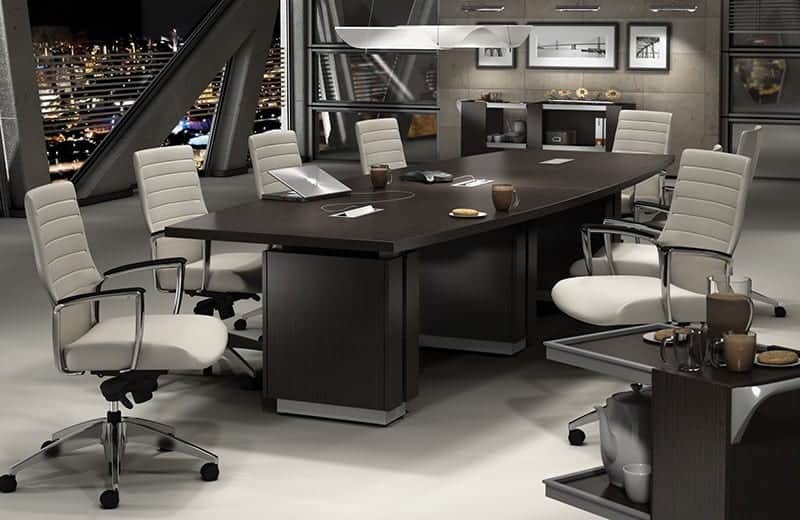
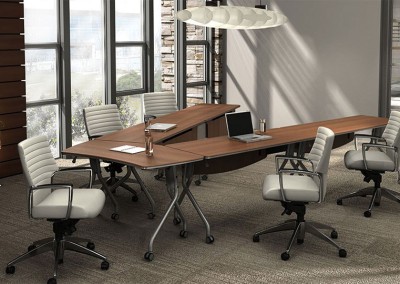
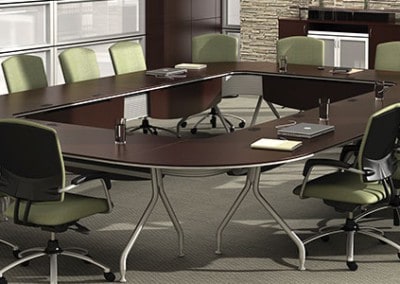


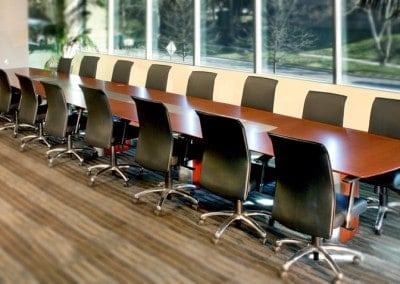
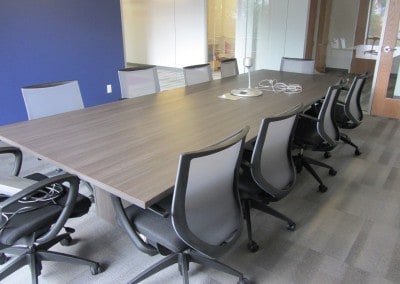
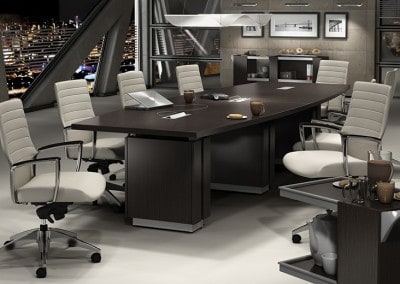

Good informative post presenting some really good collection of conference room office furniture. Will refer to the options mentioned above.
We are so glad you found this information useful! Thank you for reading our blog!- The Joyce Contract Team